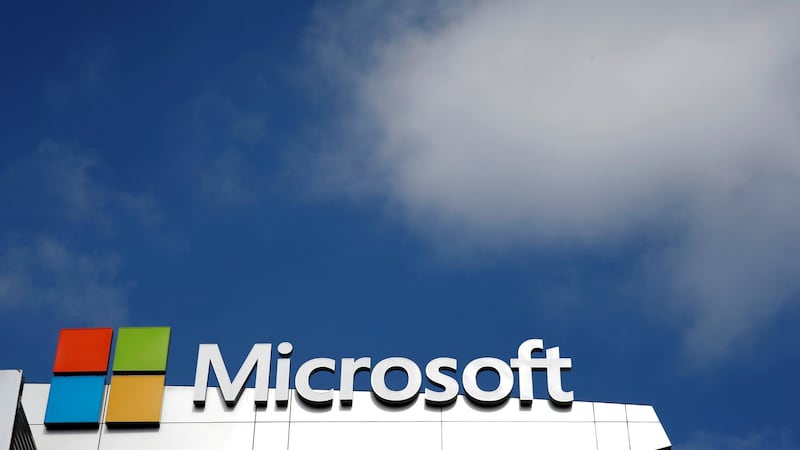Microsoft is occupying what might be described as a "limbotic" space of branding oblivion only another colossus multinational could identify with. Increasingly, the firm appears to be doing nothing only because it's actually doing everything.
For over 20 years the company has been expanding beyond its domination of operating system market, principally through acquisitions. Recent high profile takeovers include Skype Technologies in 2011, Nokia's mobile unit in 2013, video game developers Mojang – authors of the hugely popular game Minecraft – in 2014, and most recently, LinkedIn, bought at the end of 2016 for $26.2 billion (€24 billion).
Its annual conference for software engineers and web developers using any of the firm's growing products and services list – Microsoft Build – took place last week in Seattle, Washington, for the first time since it began in 2011. Build aims to draw in a specialist tech crowd and succeeds in doing so with the number attending this year's event reportedly in the region of 6,000. At upwards of $2,000 (€1,800) a ticket, there's clearly still a few quid to be made in event management.
The sizeable international media group in attendance were also well-rehearsed on several of the more esoteric programme events. Half a dozen of Microsoft's top engineers joined the company's corporate vice-president for communications, Frank X Shaw, for a press briefing the night before the conference officially started. Pleading ignorance rather than avoidance, several of the more technical questions posed by the media nerds were left unanswered by Microsoft's elite.
Like every other self respecting tech giant – with designs on global domination – deep down it knows 'cloud storage' is the only market anyone in tech truly cares about right now
It should not, however, come as much of a surprise that some of the world’s top engineers were not au fait with every aspect of their own specialist fields. Microsoft has products in countless software spaces, many of which provide both the tools and freedom for individual designers, coders, and web developers to redefine questions before they’ve even been asked.
Different markets
No doubt Microsoft has its reasons for moving into the varied range of different markets it has in recent years. But like every other self respecting tech giant – with designs on global domination – deep down it knows “cloud storage” is the only market anyone in tech truly cares about right now.
Analysts roundly concur on the cloud's long-term potential as a solution to secure data storage. Web architects are growing increasingly adept in designing cloud storage facilities, that can be easily tailored for varying uses. Most importantly, however, companies such as Microsoft, Oracle and Apple see the bigger picture.
"When I joined the company in 1992, the total amount of internet traffic amounted to 100 gigabytes per day," Microsoft chief executive Satya Nadella said at the conference. "Today 17.5 million times that much traffic is generated every second. Ninety per cent of all the data that has ever been created was generated in the last two years."

In other words, we bear witness to the embryonic stages of data storage management. There’s still a brave new world to discover. But some have caught a glimpse into the future and discovered just how much bigger this sector will become. Naturally, every cloud storage provider wants to get a foothold in the market as early as possible.
Some are having more success than others. According to Nadella’s keynote speech on the opening day of the Build event, 90 per cent of all listed Fortune 500 companies were already on Microsoft’s cloud. This impressive – though somewhat dubious – claim was also broadcast several times on giant screens at the Washington State Convention Centre in downtown Seattle.
When The Irish Times later questioned Microsoft representatives as to the accuracy of this percentage, implying it might be a little on the high side, this accusation was quickly dismissed – not only by Microsoft communications staff but also by journalists who happened to be eavesdropping on the conversation.
The following morning, the same good news story continued to be broadcast across the big screens at the convention centre, this time, however, with one significant edit. The percentage of Fortune 500 companies had been revised down to 80 per cent.
Artificial intelligence
Meanwhile, vice-president of Microsoft's artificial intelligence research group Harry Shum talked at length about his vision for democratising AI and making it more accessible to developers.
“We’re already seeing huge progress in customisable cognitive services,” he said. “This includes advanced speech recognition technologies that can be trained within one’s own sensory domain. Customisation across all the senses – gesture, vision, decision-making, etc – are all ways we are investing in advance of the coming AI revolution.”

The "intelligent edge" of Microsoft's "intelligent cloud" is merely a buzzword for those industrial internet of things devices, applications and environments connected to the cloud but physically separate from it. In this realm, you'll often find a multitude of devices, all somehow collaborating to deliver a service. "These workloads and applications are slowly but inevitably becoming very AI intensive," Kevin Scott, Microsoft's chief technology officer, said.
“We’re providing developers with tools to take existing cloud intelligence platforms already developed for different settings and push them into other fields. This we feel helps give developers a level of transparency you couldn’t get with any other system.”
This is but one of several examples illustrating a significant policy shift in terms of how Microsoft wants to do business in the future. A culture of openness may have been central to Bill Gates and Paul Allen when they founded the company back in 1975. But the new Microsoft approach – at least when it comes to software – appears to be governed by one fundamental goal: design with universal application in mind. "We want to allow Windows to move across all devices, once and for all," said Scott. "In so doing, we'll show how it can make any other device better."













